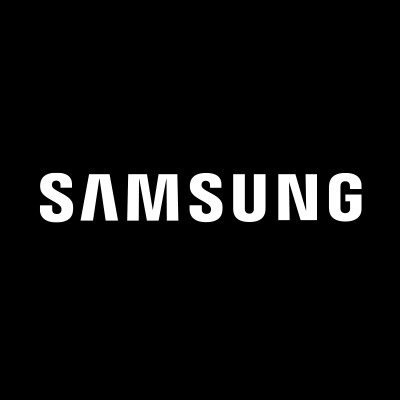T-Mobile and Starlink: A New Era of Connectivity
February 10, 2025, 9:36 pm

Location: United States, Texas, Dallas
Employees: 10001+
Founded date: 1876
Total raised: $850.27M

Location: United States, California, San Francisco
Employees: 10001+
Founded date: 1938
Total raised: $6.4B
In a world where connectivity is as vital as air, T-Mobile and Starlink are launching a groundbreaking service. This partnership promises to bridge the gaps in mobile coverage, especially in remote areas. For just $15 a month, users can access satellite-supported texting and data services. It’s a leap into the future, where cell towers float in the sky.
The service is currently in beta mode. T-Mobile users can sign up online and test the waters for free until July 2025. This is not just for T-Mobile customers. Users from other carriers, like Verizon and AT&T, can also join the experiment if their phones support digital SIM cards. It’s a collective step towards universal connectivity.
Starting in July, T-Mobile customers will pay $15 a month for the service. Those who participated in the trial will enjoy a discounted rate of $10. For users on the premium Go5G Next plan, the service comes at no extra charge. Verizon and AT&T customers will pay a bit more, at $20 a month. This pricing strategy is a smart move, ensuring that more users can access this innovative technology.
The initial offering focuses on satellite-supported texting. In areas where traditional cell service fails, users can still send messages. It’s like having a lifeline in the wilderness. T-Mobile plans to expand this service to include voice calls and picture messaging in the future. Imagine being able to chat with friends while hiking in the mountains or during a road trip through the desert.
This initiative follows T-Mobile and Starlink’s previous success in disaster zones. Last year, they provided emergency texting and alerts, regardless of the user’s carrier. This service received regulatory approval, paving the way for commercial use. It’s a testament to the potential of satellite technology in enhancing communication during crises.
Apple’s recent software update adds support for the Starlink network. This means that iPhone users can now join the satellite revolution. Samsung phones were already compatible, but this expansion opens the door for millions of new users. The tech landscape is shifting, and those who adapt will thrive.
The technology behind this service is impressive. Starlink satellites orbit at an altitude of over 300 kilometers, traveling at speeds exceeding 27,000 kilometers per hour. They act like floating cell towers, delivering signals to users on the ground. This is a significant technical achievement, pushing the boundaries of what we thought possible.
T-Mobile’s president described this service as the first and only space-based mobile network in the U.S. It automatically connects to users’ phones when they are out of range of traditional cell towers. This seamless integration is a game-changer. No more searching for a signal; it finds you.
The network also broadcasts Wireless Emergency Alerts (WEA) across the U.S. This feature ensures that users receive critical information, even in the most isolated areas. It’s a safety net that could save lives.
The reach of this service is vast. It covers over 1.3 million square kilometers, an area often left in the dark by terrestrial networks. T-Mobile and Starlink are not just addressing existing gaps; they are redefining the landscape of mobile connectivity.
As the service evolves, T-Mobile is inviting wireless providers worldwide to join their alliance. Companies from Japan, Australia, Canada, and Ukraine are already on board. This global collaboration could lead to a more interconnected world, where communication knows no boundaries.
In March 2024, SpaceX reported impressive test results. They achieved download speeds of around 17 Mbps using the Direct to Cell technology. This is a promising start, suggesting that users can expect a reliable experience. The potential for video calls and multimedia sharing is on the horizon, further enhancing the service’s value.
Vodafone recently made headlines with its own satellite video call experiment. This shows that the race for satellite connectivity is heating up. T-Mobile and Starlink are at the forefront, but competition is fierce. The market is ripe for innovation, and consumers will benefit from these advancements.
As we look to the future, the implications of this service are profound. Imagine traveling to remote locations without losing touch with the world. Picture emergency responders having reliable communication tools in disaster-stricken areas. The possibilities are endless.
In conclusion, T-Mobile and Starlink are not just launching a service; they are igniting a revolution. For $15 a month, users can access a lifeline in the most challenging environments. This partnership is a beacon of hope for those who have felt the sting of disconnection. As technology continues to evolve, we can expect even greater strides in connectivity. The sky is no longer the limit; it’s just the beginning.
The service is currently in beta mode. T-Mobile users can sign up online and test the waters for free until July 2025. This is not just for T-Mobile customers. Users from other carriers, like Verizon and AT&T, can also join the experiment if their phones support digital SIM cards. It’s a collective step towards universal connectivity.
Starting in July, T-Mobile customers will pay $15 a month for the service. Those who participated in the trial will enjoy a discounted rate of $10. For users on the premium Go5G Next plan, the service comes at no extra charge. Verizon and AT&T customers will pay a bit more, at $20 a month. This pricing strategy is a smart move, ensuring that more users can access this innovative technology.
The initial offering focuses on satellite-supported texting. In areas where traditional cell service fails, users can still send messages. It’s like having a lifeline in the wilderness. T-Mobile plans to expand this service to include voice calls and picture messaging in the future. Imagine being able to chat with friends while hiking in the mountains or during a road trip through the desert.
This initiative follows T-Mobile and Starlink’s previous success in disaster zones. Last year, they provided emergency texting and alerts, regardless of the user’s carrier. This service received regulatory approval, paving the way for commercial use. It’s a testament to the potential of satellite technology in enhancing communication during crises.
Apple’s recent software update adds support for the Starlink network. This means that iPhone users can now join the satellite revolution. Samsung phones were already compatible, but this expansion opens the door for millions of new users. The tech landscape is shifting, and those who adapt will thrive.
The technology behind this service is impressive. Starlink satellites orbit at an altitude of over 300 kilometers, traveling at speeds exceeding 27,000 kilometers per hour. They act like floating cell towers, delivering signals to users on the ground. This is a significant technical achievement, pushing the boundaries of what we thought possible.
T-Mobile’s president described this service as the first and only space-based mobile network in the U.S. It automatically connects to users’ phones when they are out of range of traditional cell towers. This seamless integration is a game-changer. No more searching for a signal; it finds you.
The network also broadcasts Wireless Emergency Alerts (WEA) across the U.S. This feature ensures that users receive critical information, even in the most isolated areas. It’s a safety net that could save lives.
The reach of this service is vast. It covers over 1.3 million square kilometers, an area often left in the dark by terrestrial networks. T-Mobile and Starlink are not just addressing existing gaps; they are redefining the landscape of mobile connectivity.
As the service evolves, T-Mobile is inviting wireless providers worldwide to join their alliance. Companies from Japan, Australia, Canada, and Ukraine are already on board. This global collaboration could lead to a more interconnected world, where communication knows no boundaries.
In March 2024, SpaceX reported impressive test results. They achieved download speeds of around 17 Mbps using the Direct to Cell technology. This is a promising start, suggesting that users can expect a reliable experience. The potential for video calls and multimedia sharing is on the horizon, further enhancing the service’s value.
Vodafone recently made headlines with its own satellite video call experiment. This shows that the race for satellite connectivity is heating up. T-Mobile and Starlink are at the forefront, but competition is fierce. The market is ripe for innovation, and consumers will benefit from these advancements.
As we look to the future, the implications of this service are profound. Imagine traveling to remote locations without losing touch with the world. Picture emergency responders having reliable communication tools in disaster-stricken areas. The possibilities are endless.
In conclusion, T-Mobile and Starlink are not just launching a service; they are igniting a revolution. For $15 a month, users can access a lifeline in the most challenging environments. This partnership is a beacon of hope for those who have felt the sting of disconnection. As technology continues to evolve, we can expect even greater strides in connectivity. The sky is no longer the limit; it’s just the beginning.